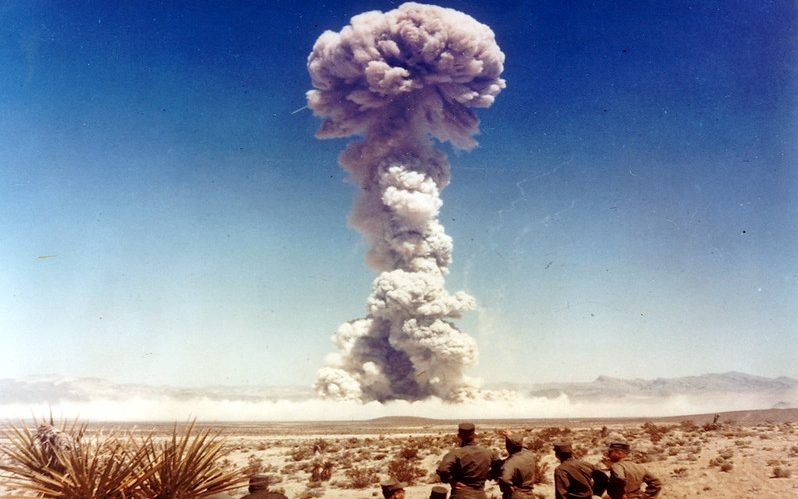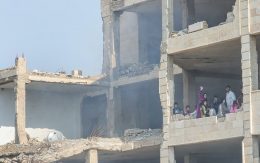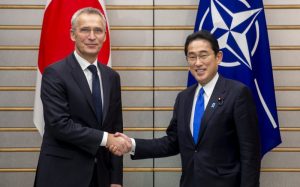Introduction
On 24 October 2020, Honduras became the 50th state to ratify the Treaty on the Prohibition of Nuclear Weapons (TPNW). This significant threshold triggers the treaty’s entry into force after 90 days. This means that on 22 January 2021 – and for the first time since the invention of nuclear weapons – their use, threat of use, development, production, manufacture, acquisition, possession, stockpiling, transfer, stationing, or the installation of nuclear arms on a signatory’s territory by another country will become illegal under international law.
This treaty traces back to a series of efforts led by the Humanitarian Initiative1 and three international conferences highlighting the humanitarian impacts of nuclear weapons (Oslo in 2013, Nayarit and Vienna in 2014) and is the outcome of July 2017 negotiations in the UN General Assembly, in which more than 120 states participated.
While historic in its ambition to make nuclear weapons illegal, the TPNW by itself does not eliminate any single nuclear weapon. By outlawing nuclear weapons, however, the TPNW represents an important step in the long road towards nuclear disarmament, as it strengthens the legal and political norms against the use of nuclear weapons and revives the stalling nuclear disarmament agenda.
A brief history on Nuclear Disarmament
This year marks one of the most tragic anniversaries in history. Seventy-five years have passed since the first atomic bombs were dropped in Hiroshima and Nagasaki. Aiming to confront the challenges after the beginning of the nuclear age in 1946, the UN General Assembly established a Commission to foster discussions on how to establish a nuclear nonproliferation regime (Lantis and Wunderlich 2018, 581). It took, however, the Cold War and an almost all-out nuclear confrontation between the USA and the USSR to finally agree on a multilateral agreement – the Non-Proliferation-Treaty (NPT).
The NPT entered into force on 5 March 1970 and, until today, is the only multilateral treaty regulating nuclear non-proliferation and disarmament. This landmark treaty rests on a grand compromise between non-nuclear-weapon states and nuclear-weapon states. While the non-possessing states committed to using nuclear energy for peaceful purposes and never developing nuclear military capabilities, the possessing states committed to disarming their nuclear arsenal and refraining from sharing nuclear weapons and technology with other member parties.
Nuclear disarmament efforts are codified in Article VI, which includes the requirement for the nuclear-weapon states bound to this treaty (USA, Russia, China, France, and the UK) to “pursue negotiations in good faith on effective measures relating to cessation of the nuclear arms race at an early date and to nuclear disarmament, and on a treaty on general and complete disarmament under strict and effective international control” (UNODA 2020).
Although the NPT remains the most significant treaty in arms control – no other multilateral arms limitation or disarmament agreement has ever acquired more signatories and ratifications – it is often referred to as the “most brilliant half-successful arms control agreement in history” (Thakur 2015, 191). Half-successful in the sense that it succeeded in containing non-proliferation, however, failed to achieve complete nuclear disarmament among its signatories.
Every five years the NPT signatories (currently 191 states) convene for the NPT Review Conference to evaluate the implementation of the treaty’s obligations. The last NPT Review Conference, held in 2015, failed to reach a consensus and ended without any concrete steps to further nuclear disarmament and non-proliferation.
The Crisis of Nuclear Disarmament
This years’ 2020 NPT Review Conference had to be postponed due to health and safety concerns posed by Covid-19. This means that for the past five years there has been no renewed commitment towards nuclear non-proliferation, leaving the future of nuclear disarmament in limbo. This crisis is being further complicated by opposing views and actions between possessing and non-possessing states, international NGOs, and civil society actors.
On the one hand, demands for the progress of nuclear disarmament by civil society actors, international NGOs, and non-nuclear-weapon states has gained momentum. This is mainly due to the success of the Humanitarian Initiative and the international attention it gained when the UN decided to start negotiating a legally binding nuclear ban treaty (Lantis and Wunderlich 2018, 583). For its efforts in jumpstarting this process, the International Campaign of Abolishing Nuclear Weapons (ICAN) was rewarded with the 2017 Nobel Peace Prize.
On the other hand, all nine nuclear-weapon states keep investing in the modernization of nuclear arsenals while bilateral disarmament treaties between the USA and Russia unravel. Neither the nuclear-weapon states and their NATO allies have signed the TPNW (nor shown any indications that they will do so in the foreseeable future). In fact, current geopolitical realities trigger Cold War memories, as possessing states are modernizing their arsenals with new and more accurate nuclear weapons.
At the same time, bilateral nuclear disarmament agreements between the US and Russia continue to unravel. On 2 August 2020, both states withdrew from the Intermediate Nuclear Missile Treaty (INF-Treaty), which prohibited a whole category of land-based nuclear weapons (with a range between 500 and 5,500 kilometres). Whether the New Strategic Arms Reduction Treaty (New Start) treaty faces a similar future remains to be seen. It mostly depends on whether Washington will reciprocate Moscow’s willingness to extend the treaty, which is set to expire in February 2021. If not, this would be the first time since the end of the Cold War where both states are not bound to any treaty constraining their nuclear arsenals.
The TPNW and the Revival of Nuclear Disarmament
The coming into force of the TPNW on 22 January 2021 marks a new, hopeful phase in the stalling process of nuclear disarmament. While the TPNW does not eliminate any nuclear weapons, it complements other important nuclear non-proliferation and disarmament agreements (like the NPT), by forcing signatory states to adhere to their safeguard obligations with the International Atomic Energy Agency. Moreover, the TPNW revives the ban against nuclear testing established in 1996 by the Comprehensive Test Ban Treaty (CTBT).
Most importantly, however, by outlawing nuclear weapons the TPNW delegitimizes them as an instrument of power, as “any use of nuclear weapons would be contrary to the rules of international law applicable in armed conflict, in particular the principles and rules of international humanitarian law” (UN 2017).
Unsurprisingly, the five largest nuclear arsenals and NPT members (USA, Russia, China, the UK, and France) and the other nuclear-armed states (India, Pakistan, Israel, and North Korea) are not willing to join the TPNW in the foreseeable future. Now that the treaty exists, however, all states (whether proponent or opponent) need to address the increasing demand to further nuclear disarmament and think about ways to do so. One obvious opportunity is the upcoming five-year extension of New Start in February 2021.
Sources
Arms Control Association (2020): Ban Treaty Set to Enter into Force, https://www.armscontrol.org/act/2020-11/news/ban-treaty-set-enter-into-force, accessed 07.11.2020
Arms Control Association (2020): The Treaty on the Prohibition of Nuclear Weapons At A Glance, https://www.armscontrol.org/factsheets/nuclearprohibition, accessed 07.11.2020
Arms Control Association (2020): Nuclear Ban Treaty a Much Needed Wake Up Call, https://www.armscontrol.org/act/2020-11/focus/nuclear-ban-treaty-much-needed-wake-up-call, accessed 11.11.2020
BMEIA (2014): Vienna Conference on the Humanitarian Impact of Nuclear Weapons, https://www.bmeia.gv.at/en/european-foreign-policy/disarmament/weapons-of-mass-destruction/nuclear-weapons/vienna-conference-on-the-humanitarian-impact-of-nuclear-weapons/, accessed 21.11.2020
Lantis, J. S. and C. Wunderlich (2018): Resiliency Dynamics of Norm Clusters: Norm Contestation and International Cooperation, Review of International Studies, 44 (3), 570–593.
Müller, H. and C. Wunderlich (2018): Not Lost in Contestation: How Norm Entrepreneurs Frame Norm Development in the Nuclear Nonproliferation Regime, Contemporary Security Policy 0 (0), 1–26.
Nobel Peace Prize (2017): The Nobel Peace Prize, https://www.nobelprize.org/prizes/peace/2017/summary/, accessed 13.11.2020
Reaching Critical Will (2020): 2020 NPT Review Conference, https://www.reachingcriticalwill.org/disarmament-fora/npt/2020, accessed 08.11.2020
Thakur, R. (2015): Nuclear Weapons and International Security : Collected Essays, Routledge.
UN (2017): The Treaty on the Prohibition of Nuclear Weapons (TPNW), http://undocs.org/A/CONF.229/2017/8, accessed 12.11.2020
UNODA (2020): Treaty on the Non-Proliferation of Nuclear Weapons (NPT), https://daccess-ods.un.org/TMP/1750946.3429451.html, accessed 07.11.2020
Footnotes
- Formerly known as the “Austrian Pledge” this initiative was born out of a series of humanitarian conferences 2013 (Oslo), and 2014 (Nayarit and Vienna) endorsing to close the legal gap of prohibiting nuclear weapons. To internationalize this initiative it later was termed “Humanitarian Initiative”. [>]








Be First to Comment